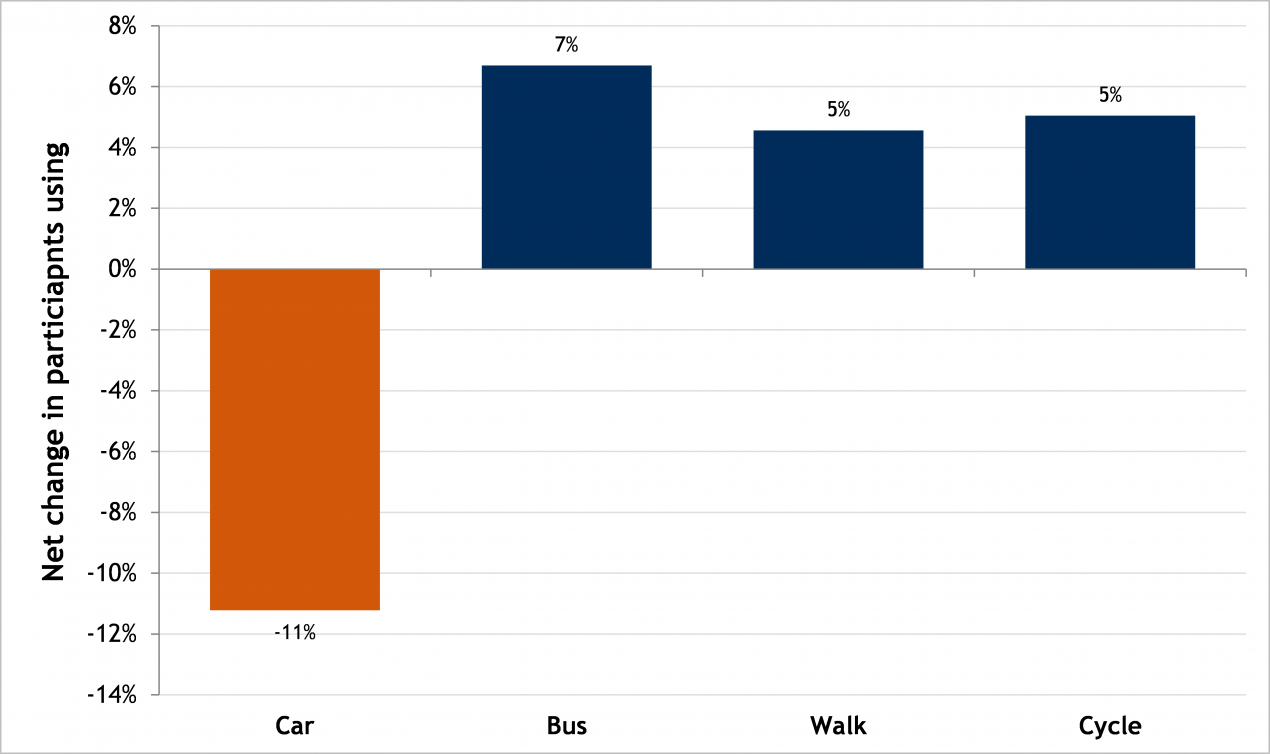Steer Davies Gleave recently hosted a review workshop for local authorities in the UK who have been delivering Personal Travel Planning (PTP) projects, primarily as part of their Local Sustainable Transport Fund (LSTF) programmes. Representatives from 15 local authorities attended the session which was facilitated by Steer Davies Gleave’s lead PTP practitioners including Lisa Buchanan and Tony Duckenfield.
This series of articles will examine some of the key themes and discussions covered in the workshop. This included an overview of what’s been delivered during LSTF, the role of monitoring and evaluation, establishing a legacy for PTP projects and looking ahead to what innovations may be in the future for PTP.
PTP delivery during LSTF
Since 2012, at least 40 local authorities in the UK have implemented a PTP scheme as part of their LSTF programme. Collectively, these schemes have encompassed nearly half a million households in the UK, delivering PTP on an unprecedented scale. There has been a vast diversity in respect to geography and variation in methods used across these projects, and this provides an excellent opportunity to share lessons learnt and experiences.
Project success factors
So what makes a PTP project successful? Essential criteria include good alternative transport options and the right geodemographic mix. However, alongside these key ingredients there are other variables which we have found can really add value to a PTP project’s successful delivery.
Quality of the Travel Advisor team
Recruiting, training and managing a team of Travel Advisors can often be a resource intensive part of a PTP project, but our experience suggests this is a worthwhile investment. Although it’s not a job that requires any particular prior experience, it is a skilled and challenging job. A team that is well trained and well remunerated will have more commitment to the project’s goals. Team members will also be more likely to see the project period through to the end.
In Thurrock we are in our third summer of delivering residential PTP, and about 80% of our team has returned to the project each year because they believe in what the project is achieving and want to see it through to the end. The experience these staff bring to the project means we are seeing the quality of engagement improve exponentially.
A focused project area
Whether it is an entire town, a commuter corridor, an area where there have been infrastructure improvements or new transport services, or just a clearly defined local community, a focussed engagement area can help people identify with the project and relate to its goals.
In Cambridgeshire we are targeting entire towns along key commuter routes into Cambridge. The momentum of visiting every single household within a town has created a local ‘buzz’ for the project, a sense of “have they visited you yet?” amongst the community, where over 40% of the target population has participated in the PTP, and in some neighbourhoods this is as high as 55%.
In Portsmouth where we are doing On-Street PTP targeted at tourists and visitors to Portsmouth, a strong brand and placement of the team makes them easily identifiable and sought out. Monitoring of that project has shown that visitors who speak with our team then go on to spend more time in Portsmouth than they planned and visit more attractions than they had expected to.
Make the most of a rich and robust dataset
Data collection is a crucial part of good PTP delivery, not least because the paper trail is so essential for risk management. So much information and feedback is collected from residents on such an intensive scale, but reporting requirements mean that we often barely skim the surface of our PTP datasets. In some of our projects, we use the Travel Advisors to undertake the baseline survey work as well as the PTP. This means that when they come to do the PTP, they already have a good feel for local residents’ issues. As one of our TAs said, “Some of my favourite conversations have been with residents who I met [during the baseline survey work] and who remember my visit from then: we’re able to pick up the conversation we started a few months earlier.”
Feedback
Some statistics from SDG’s 2013 projects
- Doors knocked on – 76,840
- Households contacted – 46,424
- Households participating – 24,821
- Resources delivered – 97,665
- Travel Advisors rated as “Very Good” – 87%
- Participants agreeing that the conversation made them think about their travel – 75%
See all of our PTP articles.

